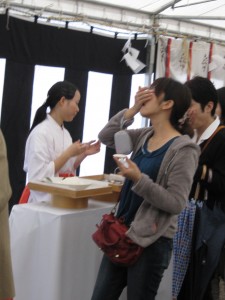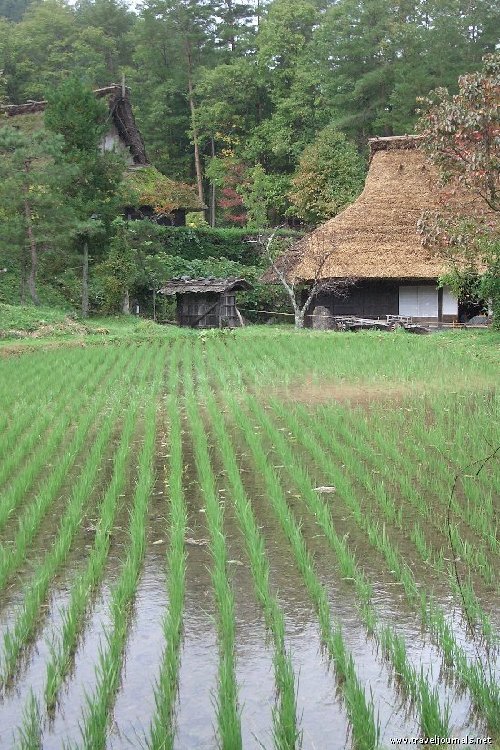In an article today in the Daily Yomiuri, Kevin Short writes of rice paddies and the ta no kami (kami of the rice fields). Surprisingly it was sparked by a chance encounter in a park in Ikebukuro in downtown Tokyo of all places. (The full article can be seen here.)
**********************************************************************

Ta no kami representation
To my great disappointment, the park is currently walled off for construction. The two shrines, however, are still accessible. My destination this time was the Suitengu, situated at the northern end of the park. This shrine is dedicated to the spirits of Emperor Antoku, son of the famous late Heian-period (794-1192) warrior chieftain Taira no Kiyomori, and his mother and grandmother, who all drowned themselves in 1185 after the disastrous battle of Dannoura. The Heike clan of samurai warriors, which Kiyomori had led to power and glory, was totally defeated in this battle by their arch-rivals the Genji clan.
This particular Suitengu is just a small local shrine in front of which stand four very unusual stone statues. Seen from the front, these stones depict stolid standing monks with grinning, almost mischievous faces. In their hands, they hold small bowls topped with steamed rice, and shamoji paddle-shaped rice ladles. Although the local people treat these stones as Dosojin guardians, they are actually Ta no Kami, rice paddy spirits that have somehow arrived here from southern Kyushu region.

Sacred rice being swallowed whole at Izumo Taisha
The Ta no Kami cult is widespread throughout the country, and is at the heart of Japanese rural folk cosmology. The Japanese imbue rice with a sacred reverence and deep cultural significance that completely transcends the plant’s nutritional and economic value as a food grain. It was rice, first brought here from the Korean Peninsula nearly 3,000 years ago, that transformed Japan from a land of scattered hunter-gatherers to a great nation. Gohan, the basic word for cooked rice, is also a general term for food or a meal. Even today, the Japanese people, despite their insatiable appetite for bread and noodles, still think of themselves as rice eaters.
In most regions, the Ta no Kami are represented abstractly, with tree branches decorated with strips of paper, sometimes stuck into mounds of sand. In a restricted area of southern Kyushu, however, there is a tradition, dating back to at least the early 18th century, of carving unique stone representations, locally called Ta no Kansa. This tradition centers in Kagoshima Prefecture but includes a small portion of neighboring Miyazaki Prefecture as well.
The statues here are very typical of this Kyushu style. Each wears around his head a thick cowl that is actually the prop in a clever illusion. Seen from behind, this cowl turns into the top of a potent male phallic symbol. In Japanese folk cosmology, the rice-paddy spirits are actually one and the same with the Yama no Kami, or mountain spirits, which are sometimes represented as phallic symbols.
Yama no Kami reside in hills and forests all over Japan. They can be thought of as basic animistic spirits mingled with the departed souls of the local ancestors, which are believed to eventually rise into the mountains. In many regions, these basic protective spirits inhabit the mountains during the winter months, but come spring they move down into the rice paddies, turning into the Ta no Kami and watching over the precious crop until the autumn harvest is over, after which they return to the forested slopes. In Kyushu, the Ta no Kansa stones are placed on the dikes that surround and separate the paddies, and the villagers hold colorful festivals to welcome and petition the Ta no Kami in spring, and to see them off with great thanks in autumn.

Rice fields at Takayama (courtesy of craisen)
******************************************************************************************
For an interesting page on ta no kami at Gabi Greve’s Daruma Museum site, click here.

Leave a Reply